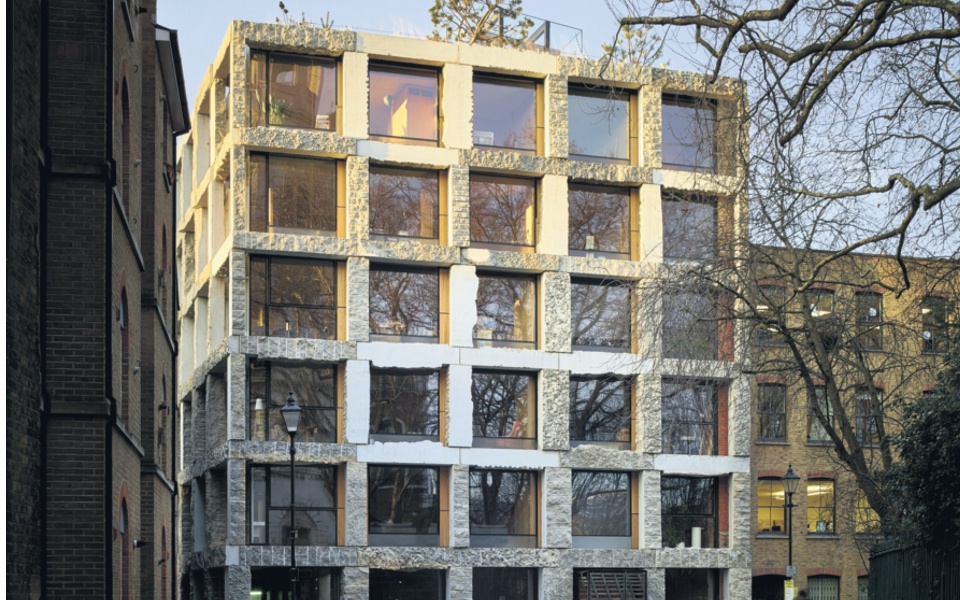
Londons walking tours are a great way to read the streets. Layers of history are all around us – every brick, every alley has a story to tell, and guides familiarise us with architectural styles, from modern to maverick.
During this Mays Clerkenwell Design Festival I found not one but two design walking tours of EC1 – Made in Clerkenwell by resident-guide Karen Lansdown, and a three-hour walking tour by the architect Ward Thompson. Both delved into the history of this vibrant neighbourhood and both stopped outside 15 Clerkenwell Close, the RIBA award-winning office and apartment building completed in 2017.
Like the best architecture, the more you know of this bold building, the more there is to appreciate. Yet its fate hangs in the balance. Resolutely flouting the pastiche of its neighbours and refusing to “fit in,” the building is under threat of demolition due to residents complaints.
Built by Amin Taha Architects with Groupwork, the idea was to contextualise a new building within the sites origins as an 11th-century limestone Norman abbey (disbanded by Henry VIII), referencing the building methods of the Normans, yet creating something clearly contemporary.
So rich is Clerkenwells history as the place where people settled who didnt “fit in” within the ancient City walls, that the site had once been home to Oliver Cromwell, and briefly housed the radicals Marx and Lenin. Because it was destroyed by fire, the architects found only a few stones from the abbey, but the new building traces its 11th-century boundaries. Taha investigated the Normans use of limestone and 15 Clerkenwell Close took shape, with monumental columns dotted with fossils.
It isnt built as an internal structure and façade – what you see on the outside is the fabric of the building. “With its quarry-found finishes, part carved and abandoned stone columns, revealed cloisters and mosaic floors, 15 Clerkenwell Close at first alludes to a local archaeology,” Taha says. “But it also raises questions on our architectural heritage and its responsibility within a broader culture.”
In other words, rather than just conforming, architects have a responsibility to populate our cities with creative work, when coming from a place of cultural authenticity. His view on the complaints against the building is that he is “fighting retrospective aesthetic preferences of others who want to strip away the original decisions of the planning department”.
Guide Karen Lansdown says that her clients might be shocked when they first seeRead More – Source





